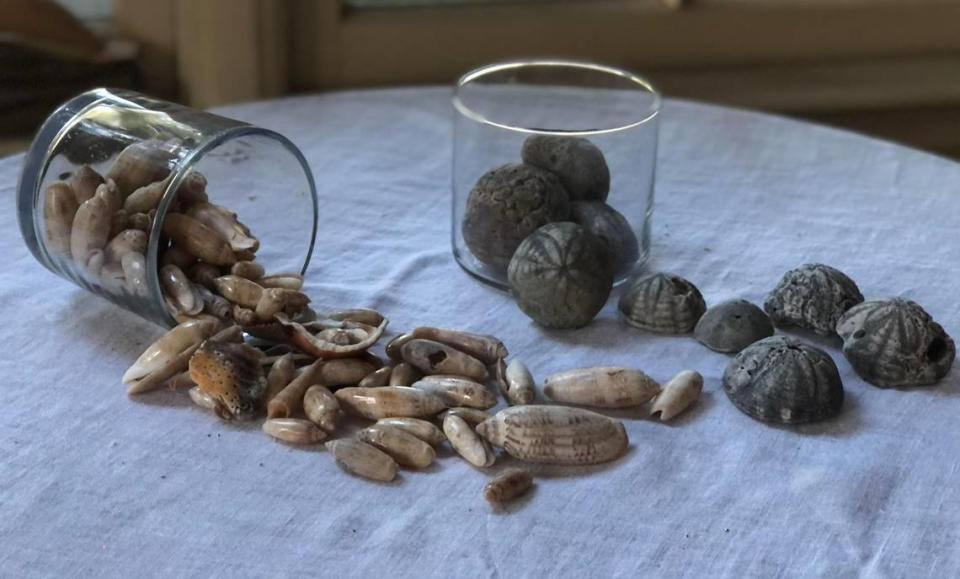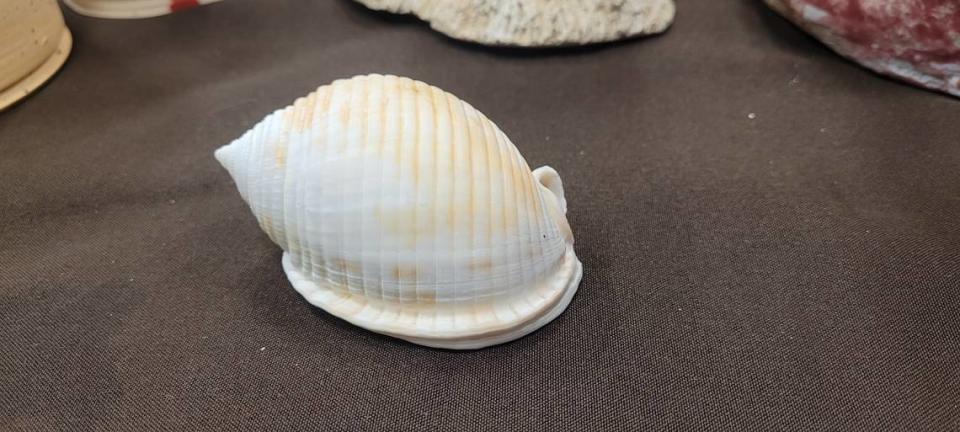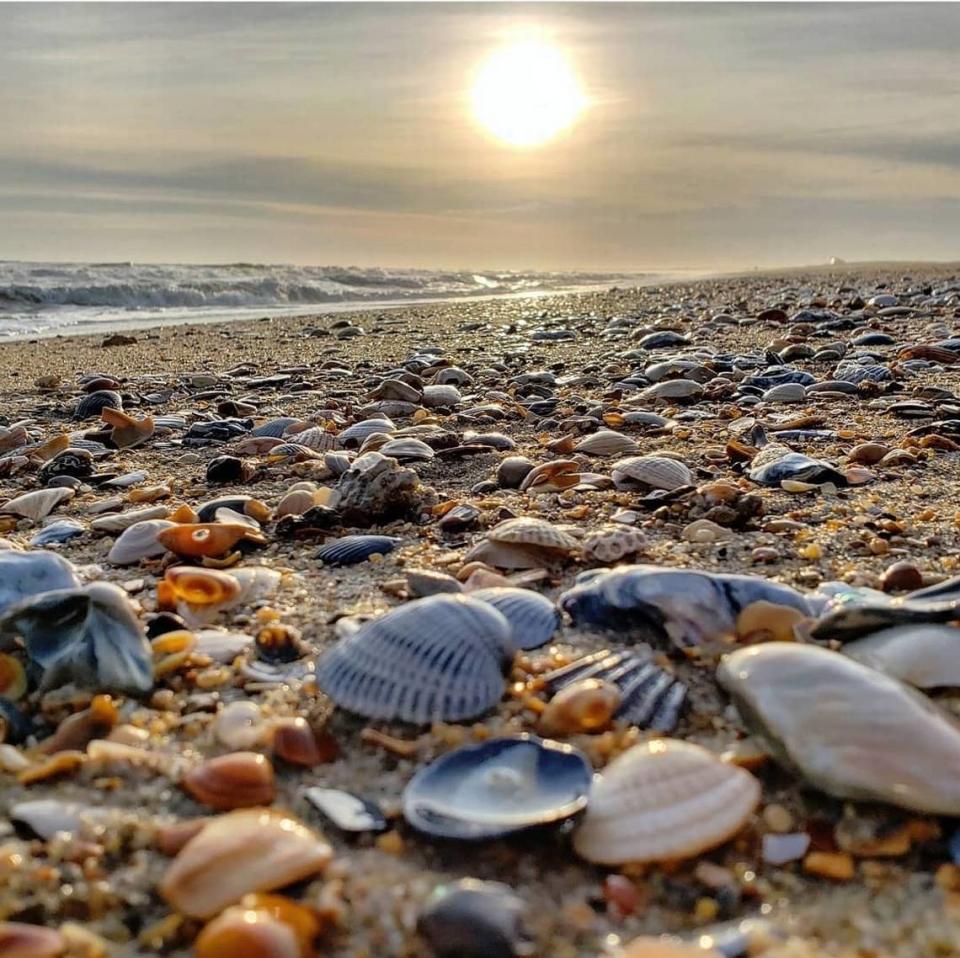Millions of seashells are landing on NC beaches. Where? And should we be telling you?
The series of storms that have raked the North Carolina coast the past several months have made some of the state’s beaches destinations for shell hunters from across the country.
These unevenly distributed riches also have started social media spats over whether all seashells should be free for the taking.
Here’s what’s happening.
Why are there so many shells on NC beaches lately?
Like other coastlines, North Carolina’s has historically been hit-or-miss for shelling, with large deposits found on a beach one day and gone the next. Collectors know that timing can increase the chances of fun finds, so they plan their visits to coincide with low tide and try to hit the beach after a big storm when possible.
Storms have been plentiful through the fall and so far this winter.
“This season we have incurred several southeast storm systems coupled with hard northerly winds that have pushed a lot of shells up on our beaches in very select areas,” said Mike Barber, spokesman for the Cape Hatteras National Seashore.
“Comparing year-to-year, Cape Hatteras National Seashore beaches this winter have seen some impressive shell pockets.”
Which NC beaches have the most shells?
Traveling to a particular spot on the beach to hunt shells is like buying a popular stock: Past performance is no guarantee of future returns.
And there is division among shellers over whether it’s a good idea to announce where the best troves are turning up, or if it’s best to guard the information the way fishermen and arrowhead-hunters stay mum about their favorite spots. Besides, some curmudgeons argue, advertising a healthy shell harvest only draws more crowds to the beaches, which are normally more peaceful in winter.
The argument has played out in comments on posts made in the Carolina Seashellers public Facebook page and other private pages. When one poster showed their haul for the day from Holden Beach earlier this week and asked for advice on how to scrub clean their new collection of sea biscuits, one response read, “People don’t always need to post what beach they’re at. It kind of ruins the peacefulness some of us go to the beach for.”
In response to another post, a commenter said, “Posting your finds it totally OK. But don’t say your location. It’s a rookie mistake. All you newbies will regret it in a few years when Holden doesn’t have a single fossil or shell.”
Others have called robust collectors “greedy.”
On the other side, a poster chastised the negative comments and asked, “Who are we to judge others?”
Ryan Bender, who takes families on shelling trips as a service of Ryan’s Inshore Adventures Fishing Charters out of Sneads Ferry, won’t say exactly where he navigates his shallow-draft boat to when his clients just have to have good shells.
But he says he has good luck on Bear Island, part of Hammocks Beach State Park. Also, Lea Island, off Topsail Beach, and Onslow Beach, north of Topsail Island.
Other productive spots:
▪ Holden Beach has been especially popular lately as fossilized sea biscuits continue to churn onto the beach from a bed offshore, along with olive shells and shark teeth.

▪ Ocracoke Island and Portsmouth Island have been heavily sprinkled with unbroken Scotch bonnets — North Carolina’s state shell — a relative rarity because the shells have to travel so far they’re usually smashed to bits
▪ Hatteras Island, including the Cape Point area at Buxton, began seeing lots of knobbed whelks after Hurricane Lee in September and following several storms since
▪ Fort Macon’s beach (near Atlantic Beach) has reportedly had deposits of wentletraps, once plentiful in the area but relatively rare there now
▪ Wrightsville Beach was covered in Atlantic giant cockle shells in December, but instead of the broken chunks that normally abound, these were intact shells, by the thousands

What shells can be found on N.C. beaches?
Hugh Porter and Lynn Houser published the definitive “Seashells of North Carolina” in 1998, and N.C. Sea Grant will release an updated version this summer that says there are more than 1,000 mollusks found in the state.
Seashells are mollusks’ protective outer coverings, made of calcium carbonate in myriad curvilinear shapes, that wash up (usually but not always empty) on the beach.
Ed Shuller, who has spent decades collecting shells, puts out the newsletter for the N.C. Shell Club and was on the team that worked with editor Katie Mosher at Sea Grant to update the shell guidebook, says different shells appear in different quantities from one beach to another largely as a function of the mollusk’s habitat needs, which usually relate to water temperature and depth.
Because of the proximity of warm water in the Gulf Stream to the North Carolina coast, some mollusks can live offshore of North Carolina that can’t survive any further north.

Is it OK to collect as many seashells as you can carry?
Erika Young, Sea Grant’s coastal and marine education specialist and another member of the guidebook team, disagrees with Shuller — and some social media posters — about this.
Shuller says that one person’s seashell habit, no matter how voracious, won’t affect the ocean’s ecosystem or deplete the number of shells available to other hunters. With every incoming high tide, most of the shells not collected will be pulled back into the ocean anyway, to be buried or reappear later, he says.
Young disagrees that taking excess numbers of shells is harmless to the environment. “As they get beaten down by the ocean, they become part of the substrate,” she said. “That’s our sand.”
Young has seen the photos online this winter of pickup-truck beds full of whelks and said she thought, as some others have, “Does anybody really need that many?”
“But maybe I’m just jealous,” said Young, who collects too.
Within the Cape Hatteras and Cape Lookout national seashores, visitors are allowed to collect up to 5 gallons of uninhabited shells per person, per day — for non-commercial use.
“If a mollusk is still in its shell or another animal has made a shell its home, please leave those shells on the beach. Take only empty shells,” the National Park Service says

